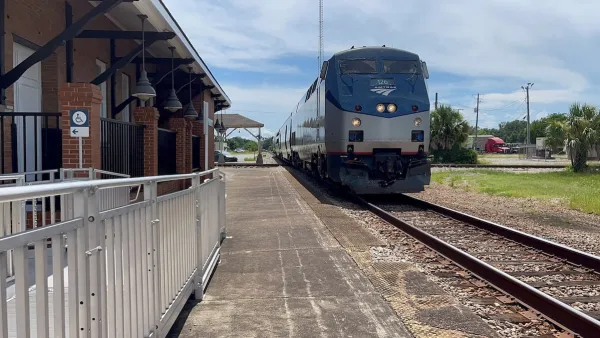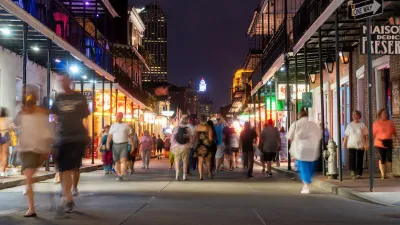Two-thirds of people who leave prison go back within three years, and many who leave prison go back to particular urban neighborhoods. New Orleans want to spend more smartly in areas whose community life is disrupted by such a cycle.
"Hurricane Katrina displaced hundreds of thousands of New Orleans residents; as they've returned, their struggles to remake their lives and communities have been well chronicled. But smaller waves of displacement, followed by straggling return, have been washing through the city, largely unremarked, for many years. In 2003, upwards of 12,000 New Orleans–area residents left the city for prison; more than half were expected to return home within three years. This destructive cycle, interrupted by the storm, is slowly reasserting itself.
Nationwide, an estimated two-thirds of the people who leave prison are rearrested within three years. A disproportionate number of them come from a few urban neighborhoods in big cities. Many states spend more than $1 million a year to incarcerate the residents of single blocks or small neighborhoods.
One such 'million-dollar neighborhood' is shown-a half-square-mile portion of Central City, an impoverished district southwest of the French Quarter. In 2007, 55 people from this neighborhood entered prison; the cost of their incarceration will likely reach about $2 million."
FULL STORY: Prison Blocks

Maui's Vacation Rental Debate Turns Ugly
Verbal attacks, misinformation campaigns and fistfights plague a high-stakes debate to convert thousands of vacation rentals into long-term housing.

Planetizen Federal Action Tracker
A weekly monitor of how Trump’s orders and actions are impacting planners and planning in America.

San Francisco Suspends Traffic Calming Amidst Record Deaths
Citing “a challenging fiscal landscape,” the city will cease the program on the heels of 42 traffic deaths, including 24 pedestrians.

Adaptive Reuse Will Create Housing in a Suburban Texas Strip Mall
A developer is reimagining a strip mall property as a mixed-use complex with housing and retail.

Study: Anti-Homelessness Laws Don’t Work
Research shows that punitive measures that criminalized unhoused people don’t help reduce homelessness.

In U.S., Urban Gondolas Face Uphill Battle
Cities in Latin America and Europe have embraced aerial transitways — AKA gondolas — as sustainable, convenient urban transport, especially in tricky geographies. American cities have yet to catch up.
Urban Design for Planners 1: Software Tools
This six-course series explores essential urban design concepts using open source software and equips planners with the tools they need to participate fully in the urban design process.
Planning for Universal Design
Learn the tools for implementing Universal Design in planning regulations.
Heyer Gruel & Associates PA
JM Goldson LLC
Custer County Colorado
City of Camden Redevelopment Agency
City of Astoria
Transportation Research & Education Center (TREC) at Portland State University
Jefferson Parish Government
Camden Redevelopment Agency
City of Claremont





























